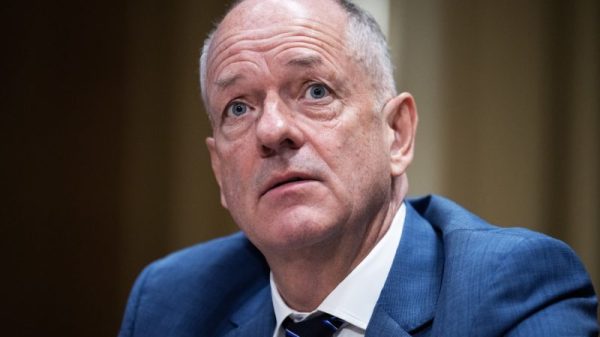Karine Pitana had just paid off the last installment on her new couch when floods tore through her hometown of Canoas in southern Brazil nearly two weeks ago. It was just a piece of furniture, but for the 42-year-old nurse, there’s a pride in having worked hard for everything she owns.
The picture is a little different in Porto Alegre, the state capital of Rio Grande do Sul. It oozes a rich colonial history in its grand architecture and a sense of luxury in its large marinas. Landing pads for private helicopters are not an uncommon site.
Weeks of floods triggered by record-smashing rainfall have left parts of southern Brazil in disaster, also laying bare some of the country’s persistent social problems: inequality in the emerging economy is still rife; crime rates remain high; and local governance is often dogged by mismanagement and, sometimes, corruption.
There is stark inequality between the country’s north and its more affluent south. But even in Rio Grande do Sul, one of the wealthiest of Brazil’s states, affluent parts of Porto Alegre stand in sharp contrast with the rundown towns on its periphery, like Canoas.
Nearly three weeks after the first rains hit southern Brazil, water levels are still too high for Pitana to return home.
With the waters receding very slowly, Pitana is now stuck with her brother and his family in a neighborhood on higher ground. She’s also unable to commute to work, despite hospitals desperately needing nurses like her.
“I try to move around, my brother and my sister-in-law take me to the shelters, me and my daughter, and we end up helping some of the people there,” she said. “There’s no point in me staying at home, with my hands tied. … It also keeps our minds busy, when we’re helping others.”
Ironically, the name Canoas comes from the Portuguese word for “canoes,” but that didn’t spare the city from the worst of the floods — it was, in fact, one of the hardest hit.
Pitana is considered lucky to have relatives to turn to. Around a quarter of Brazilians housed in temporary shelters come from Canoas, according to state government data.
Porto Alegre’s population is four times larger than Canoas’, but fewer than a fifth of those in temporary accommodations are from the capital. Many ‘gaúchos’ — as the people of Rio Grande do Sul are known — can fall back on second homes away from the city.
These inequalities remain in Brazil, despite economic growth that, over the first two decades of this century, lifted millions of people out of poverty. The number of people living in extreme deprivation has been reduced from around 15% in 2001 to under 6% of the population in 2022. And just before the Covid-19 pandemic, it had fallen to its lowest level since 1980.
Yet income inequality has remained stubbornly high. Since the early 1990s, the gap between the richest and poorest Brazilians has narrowed, but not by much, and Brazil remains the world’s eighth-most unequal country, World Bank data shows. It ranks second-last for equality of all Latin American nations, ahead only of Suriname.
That problem also feeds Brazil’s issues with crime. As the floods came into the glitzy state capital, so too did criminals ready to loot.
Reports of sexual abuse inside some of the shelters also led to at least six arrests, according to authorities, forcing the local government to set up women- and- children- only shelters. Police and military officers were also given special training to provide adequate security inside the shelters.
In Rio Grande do Sul, crime rates are below the national average and violent crime has been on a downward trajectory, reaching a historical low in 2023, although drug trafficking and theft are still problems.
Brazil as a whole, however, is still one of the most dangerous countries in the world. Even though homicide rates have fallen, it still has the most in the world, with more than 45,000 cases, UN data shows.
Lula’s Hurricane Katrina moment
Rio Grande do Sul was hit with so much rain over so long, authorities are saying it could be weeks until the floodwaters recede, especially if more rain falls.
More than 30 inches of rain (750 mm) fell on parts of the state in two and a half weeks from the end of April. That’s just a few inches shy of what a city like Chicago or Dallas typically records in an entire year.
It’s the kind of extreme weather event that’s only going to become more frequent in the region as the climate crisis bears down, science shows.
A massive operation to get the state back on its feet is underway, with President Luiz Inácio Lula da Silva disbursing an eye-watering $10 billion for the region to help it rebuild.
But anger is growing over how slowly the help came initially, as residents complain of inadequate spending on infrastructure that could have made this disaster less destructive. They are bracing for weeks of more disruption as floodwaters just won’t go away.
The outdated dikes built decades ago to keep rivers and lakes from overflowing, are now, ironically, trapping the water in, keeping much of the state, including Canoas, inundated.
“The water came into this side of the barriers, now it’ll take a long time, maybe 45, 60 days to take it to the other side,” Canoas Mayor Jairo Jorge da Silva said in an interview with Brazilian broadcaster Globo last week. “We’ve got ourselves a big pool.”
“The barriers, they end up preventing water flow in the opposite direction, the draining of the city,” said Pedro Cortês, an Environmental Science professor at the University of São Paulo.
It may not be quite the same scale, but some observers are saying the floods are Lula’s Hurricane Katrina moment.
Cortês says the combination of a lack of funding, planning and the unprecedented situation meant authorities were caught off guard.
“Unfortunately, investment in mitigation of the impacts of climate change and in tackling emergencies have been well below what is needed,” Cortês said.
“The state of Rio Grande do Sul wasn’t prepared for this kind of tragedy — it was obviously an exceptional volume of water, but the state didn’t have an adequate strategy to deal with it.”
And the government has had plenty of time to prepare. Research by Brazilian fact-checking website Lupa showed that 90% of all the areas affected by the devastating rain had experienced at least one flood or heavy rain-related emergency situation in the past decade.
Despite the warning signs, investment in flood prevention systems by Porto Alegre actually went down from 2021 to 2022, and did not even feature in the yearly budget in 2023. At the state level, funding for disaster response represents only 0.2% of the budget for 2024, despite numerous emergencies the previous year.
“Floods, not with this volume but with considerable volumes of water, have taken place in Porto Alegre in the last few years,” Cortês explains. “This was a completely unusual situation, a record situation, but unfortunately, because of what we know about climate change, it could repeat itself in the next few years unfortunately.”
Left to swim for survival
In the absence of professional help at the onset of the floods, volunteers had to take matters in their own hands.
One volunteer was Fabiano Saldanha, a 48-year-old businessman from Porto Alegre, who used his jet ski to rescue people trapped in their homes.
“It was mostly the population, us volunteers, that were rescuing people,” Saldanha says. “It was the people helping the people.”
He banded with other volunteers and coordinated teams on jet skis and small boats, navigating through narrow and debris-cluttered lanes to reach some of those trapped. Saldanha says he spent 10 days without seeing his family.
“One thing I kept repeating was, ‘No-one will be left behind,’” he recalled. He also said he believed authorities struggled to deal with the disaster in the first few days.
Even when authorities were organized and ordered evacuations, some people chose not to listen, believing the water wouldn’t reach them.
“One of those people was me,” Pitana admitted. “My mother, my father and my daughter evacuated beforehand, and they asked me to go with them, but I told them I was going to stay.”
Overnight, her home began to flood, first through the bathroom drains. Within an hour, the water was up to her knees. Then up to her waist.
“That’s when we started to panic, it was very fast,” she said, referring to herself and her husband. “We strapped some of the furniture, closed some doors and then we left — outside the water was higher, already up to our chest.”
Pitana was rescued by two young men who helped her and an elderly neighbour onto their rowboat — but it was too small to fit her husband as well.
“They had a vest in the boat and gave it to him, he put it on so he could swim along,” she said. “[The current] was very strong and the water was very deep already, maybe more than 2 meters I think.”
Pitana says she cried for help, but emergency services were nowhere to be found.
Thousands of people in the area have stories like Pitana’s. As Lula touched down in Canoas on Wednesday, for his third visit to the flood-hit areas, he tried to quell the discontent, telling reporters, “Everyone who lost their house, will have their home.”
He later announced a support package to help around 200,000 of those impacted by the floods totalling just over $200 million.
In addition to the $10 billion pledged to rebuild the state, Brazil is seeking more support from international institutions, like the IMF and World Bank.
Cortês says that both state and federal governments need to resist the urge to build quick and fast, and, rather, plan more thoughtfully for the future and its changing climate.
“The tendency is to try and rebuild what you lost. If you do that, cities will only be as resilient as they were before, and that is not enough,” he explained, calling for a deep risk analysis. “Any attempt to rebuild will need to think about preparing cities to be able to withstand these extreme weather events.”
Pitana can’t quite think about life in the future, she’s just focusing on the present, finding her new reality all-consuming. But she hopes authorities will do what they can to prevent this kind of disaster happening again.
“I think given the severity of this situation, they will do something — they have to,” she said. “We don’t want to think about it, but this will happen again.”


































